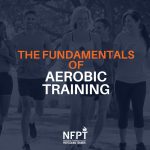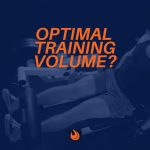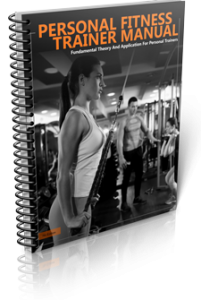
Growing muscles and gaining strength are not necessarily achieved by the same means. Strength is the foundation of everyday acts of athleticism, as well as all fitness-related activities and technical skills. Muscle Size is often highly acclaimed and desired, especially by more advanced lifters and clients. Can trainers meet both goals building size and strength simultaneously?
Software Versus Hardware
When training for strength, the general consensus is to design a program consisting of low reps and relatively heavy resistance. True low-rep strength work is considered neuromuscular. Considering the human body as a computer, strength training is about upgrading “software”, the central nervous system (CNS). Strength training is about teaching the CNS to increase motor unit recruitment.
Building strength requires proper application of a few basic principles:
- Specificity: choosing exercises specific to the client’s goals
- Overload: performing more work over time to make progress
- Fatigue Management: training to maximize fitness while minimizing fatigue
Strength is about increasing force production. Size, however, is about achieving that highly-desirable “pump” and creating microscopic damage to the muscle. With proper rest and nutrition, muscle tissue can repair and grow larger: hypertrophy in a nutshell.

Unlike building strength, training for size is more physiological in nature. It involves upgrading and building the body’s “hardware” (bones, connective tissues, and muscles), thereby forcing them to grow. Still, training for size increases the amount of weight one can lift while still remaining in the slightly higher rep ranges geared toward hypertrophy (muscle growth).
Tandem Training
In at least two specific ways, pursuing the duality of strength and hypertrophy is superior to training each of these goals independently. Strength and hypertrophy training do not detract from each other, but rather forge a symbiotic relationship over time.
A thicker muscle fiber can generate more force than a thinner fiber. Think of this as analogous to a car’s engine: a racecar driver seeks the competitive edge conferred by a big engine, while ensuring that the engine fires smoothly. This is similar to how larger, more adept muscle tissue can produce greater force.
The second rationale for concurrent strength and hypertrophy training relates to fatigue specificity: the level of exhaustion or depletion generated from one type of activity/body region has a greater negative effect on subsequent similar activities than it has for differing activities.
An upper body workout aimed at maximizing strength will negatively affect a subsequent upper body maximum strength workout more than an intense lower body session. If a client engages solely in upper-body hypertrophy workouts, training frequency becomes limited by fatigue specificity. However, by teaching her the advantages of alternating upper body strength and upper body hypertrophy sessions, she can train more frequently and still see progress.
If your program design also incorporates lower body sessions for strength and hypertrophy, she can train even more often while continuing to demonstrate growth. Trainers can help clients optimize this by making each workout as dissimilar as possible from the one that preceded it and the one that will follow.
Time Under Tension
While these two entities are distinct, muscle mass does correspond to muscular strength. Conventional wisdom holds that in order to grow lean muscle tissue, one must concurrently get stronger. This is where we need to recognize the one major drawback to low-rep training: muscle-fiber stimulation, and thus growth, is correlated closely to the amount of time a muscle is under tension. Short but intense sets lasting 15 seconds or less will develop strength, but prove ineffective at encouraging muscle growth. Hypertrophy results from performing sets that last 30 seconds to a minute in duration.

This theory of time-under-tension (TUT) points to an ideal training scheme of 8-12 repetitions. A cadence of two seconds for the concentric (lifting) action and two seconds for the eccentric (lowering) part of a movement lands right in the middle of the optimum 30- second-to-a-minute range for a given set of exercise.
Why is this so important? A set lasting longer than a few seconds forces the body to rely on its glycolytic-energy system, leading to the formation of lactic acid. Although it ignites temporary soreness, lactic acid proves vital to the production of new muscle tissue. When lactic acid is present in large amounts, it induces a surge in anabolic hormone levels within the body, most notably testosterone, long considered a highly potent player in hypertrophy. If a client’s goal is more muscle, this is the state for which to strive. The increased TUT leads to more muscle damage, also imperative for growth.
Creating “The Pump”
The moderate-rep range, when coupled with a challenging weight, tends to elicit the highly coveted muscle pump. Studies have demonstrated that the physiological conditions that lead to a pump can activate protein synthesis while limiting protein breakdown.
In terms of post-workout nutrition, which we know plays a key role in achieving one’s goals, more of the protein consumed at mealtime goes toward muscle construction instead of being burned as energy. Fast-twitch fibers draw the biggest benefit from this phenomenon. Sets that stretch past 15 reps typically mean that the amount of weight the average client can handle is not sufficiently heavy to recruit fast-twitch type-2 muscle fibers. These fibers are where the potential for growth resides, and they respond best to loads of at least 75% of a one-rep max.
To improve muscle size, you can help a client maximize TUT on every rep:
- Insist on strict form
- Facilitate controlled eccentric (lowering) movements of at least three seconds but up to 10
- Appeal to her body-mind connection – focus on muscles being worked, squeezing them at the peak of contraction
Variety and Periodization
Adaptation leads to training plateaus; trainers, therefore, must introduce variety into a client’s training paradigm. Try cycling periods of low-rep training with high-rep workouts while paying attention to progressively increasing loads, always executed with good form.
A typical periodization plan usually consists of a few phases:
Hypertrophy, or growth, consisting of high volume (eight to 12 reps, three to five sets) and moderate resistance (50-75% of one-rep max);
Strength, which consists of moderate volume (five or six reps, three to five sets) and heavy resistance (80-88% of one-rep max);
Power, usually reserved for Olympic lifters, involves low volume (two to four reps, three to five sets) and very heavy resistance (90-95% of one-rep max) moved explosively. Strength + Speed = Power.
For the average client, the first 2 phases can usually suffice. Devote at least one month to each phase, followed by 2-3 weeks of active rest.
The Role of Stress
Countless studies have demonstrated that exercise-induced mechanical stress serves as a stimulus to muscle hypertrophy. Mechanical tension refers to heavy lifting, generating the largest muscle force possible through a full range of motion.
There is, however, some fault in the theory that the heavier one lifts, the more mechanical tension produced. A 2013 study by Pinto, et al. found that muscle activation in an isometric bench press peaked at 90% of maximal voluntary contraction, suggesting that most lifters have a “sweet spot” below the one-rep max for which mechanical effort is at its highest. Adding weight past this point fails to increase mechanical tension, and has the potential to shift it away from the desired muscles and onto more passive structures. Based on this knowledge, clients would benefit more by working at 90% of their max. More reps can be successfully achieved, thereby ensuring that all-important time under tension.
To help a client maximize mechanical tension, build strategic pauses into the workout plan, such as at the bottom position of a bench press, immediately following lift-off when executing a deadlift, and at the endpoint of a hip thrust.
Here are some suggested parameters for mechanical tension:
Sets: 3-8
Reps: 3-8 or 5-12 (depending on the muscle being targeted as well as the lifter’s level of experience)
Rest Interval: 2-3 minutes
Work Backwards to Propel Forward
On a personal note, I tend to favor what experts call “the backwards workout”. Instead of having a client perform 4 sets of 10 repetitions, suggest 10 sets of 4 reps. Mathematically the number of reps remains identical. However, by executing only 4 reps within each set, a much heavier weight load can be safely handled. This tends to yield a long and exhausting workout, but one that has proven to be highly effective at building both size and strength.
Remember to choose a weight that brings each set close to failure while maintaining strict form.
In the final analysis, evidence indicates that training in a moderate-rep range provides a client’s greatest chances of successfully cultivating muscle mass. It increases hormone response, spares protein, and provides the necessary TUT to spark muscle damage. These benefits work in unison to achieve the goal of strength as well as hypertrophy.
References
- www.bodybuilding.com/content/size-vs-strength-are-you-lifting-too-heavy.html
- www.mensjournal.com/health-fitness/10-strength-building-strategies/
- fitness.stackexchange.com/questions/34186/can-you-build-size-and-strength-at-the-same-time-together-efficiently
- journals.lww.com/acsm-essr/Fulltext/2003/01000/Role_of_Body_Size_in_the_Relation_Between_Muscle.3.aspx
- www.t-nation.com/training/how-to-build-size-and-strength-simultaneous
- www.t-nation.com/training/how-to-build-size-and-strength-simultaneously
- www.jmaxfitness.com/blog/strength-for-muscle-growth/
- www.mensjournal.com/health-fitness/rep-range-builds-most-muscle/
- drjohnrusin.com/maximizing-metabolic-stress-with-intensity-techniques-for-hypertrophy/
- www.ncbi.nlm.nih.gov/pmc/articles/PMC5489423/
- www.t-nation.com/training/3-essential-workout-methods-for-muscle








